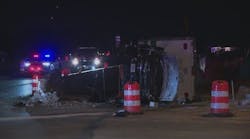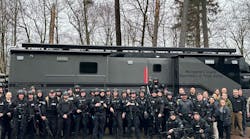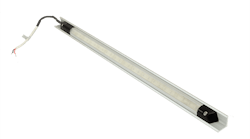The statistical breakdown is as follows:
- Nine firefighters succumbed to heart attacks while responding to and returning from alarms.
- Seven firefighters died in apparatus rollovers; six of them were drivers or passengers in pumper-tankers, tanker-pumpers, pumpers or tankers. (In one of the worst rollover accidents, eight firefighters were hurt, two very seriously, when a pumper carrying 1,000 gallons of water rolled over. At least four firefighters were ejected, with two of them becoming trapped under the wrecked rig.) The other firefighter died in Virginia when the rescue truck in which he was riding flipped over and apparently ejected him.
- One firefighter was killed when he fell off a ladder truck in Pennsylvania.
- Accidents on the nation’s major highways and interstates took the lives of five firefighters. Moreover, many police officers and EMS providers were also killed under these circumstances.
- Firefighters responding in their personal vehicles continues to be an area where great improvement is needed. In 1999, four firefighters lost their lives while responding to or returning from alarms in their own vehicles.
In the months ahead, the Emergency Vehicle Operations column will take an in-depth look at the dynamics of an apparatus rollover accident. The object will be to answer thought-provoking questions in an effort to reduce the number of firefighter deaths and injuries through better training.
One point to understand is that for every firefighter who died in an apparatus rollover accident, many more firefighters are injured. Many more accidents lead to apparatus being put out of service or destroyed, having to be replaced.
Some of the questions that need to be answered: What part did the design of the apparatus play in the accident? What were the contributing factors that caused the apparatus to roll over, such as speed, water movement, road conditions, type of road, time of day, weather conditions at the time of the accident, the age of the driver, and the driver’s level of experience and training? How did the lack of seatbelt usage contribute to the loss of life and the injuries?
The next area of our operations that deserves a closer look is on and along the nation’s major highways and interstates. There are additional thought-provoking questions that need to be answered in conjunction with highway and interstate operations. Why are fire chiefs being arrested for closing roadways in the interest of firefighter safety? What efforts can be taken before hand to eliminate police department/fire department turf battles? What educational steps can be taken to heighten the public’s awareness and attentiveness to the dangers of driving adjacent to emergency operations? What effects do drunken, drugged and fatigued drivers have on our roadway operations? What prudent steps can the incident commander and the fire department take to insure a safe work area for emergency responders? What impact do amber lights facing rearward have on scene safety versus the traditional red flashing lights? Why blinding strobe lights may actually hamper scene safety?
Appearing in this column in the future is what I hope to be a national model for highway scene safety for all emergency responders. Making a safe work environment for all emergency responders must be of a paramount concern to everyone involved.
Finally, responding in personal vehicles begs another series of questions that need to be answered. Who educates these vehicle operators as to the dangers encountered in a response? Do these responders know their rights and obligations under their respective state vehicle and traffic laws? What controls or procedures has your department enacted to keep accidents at a minimum and response safety at a maximum? Who is liable for the accident? Can the personal vehicle responder go to jail as a result of his driving?
As you can see, the upcoming series of columns proposed for Firehouse ® Magazine’s Emergency Vehicle Operations pages represents an exciting and educational future for this section of the magazine.
Michael Wilbur, a Firehouse® contributing editor, is an FDNY lieutenant in Ladder Company 27 in the Bronx and a firefighter in the Howells, NY, Fire Department. He is an adjunct instructor at the New York State Academy of Fire Science and the Orange County Fire Training Center. Wilbur has developed and presented emergency vehicle operator courses throughout the country and has consulted on a variety of fire apparatus issues.




